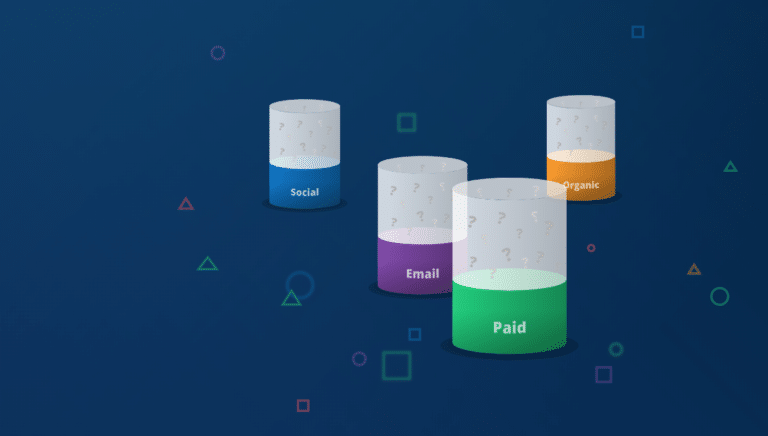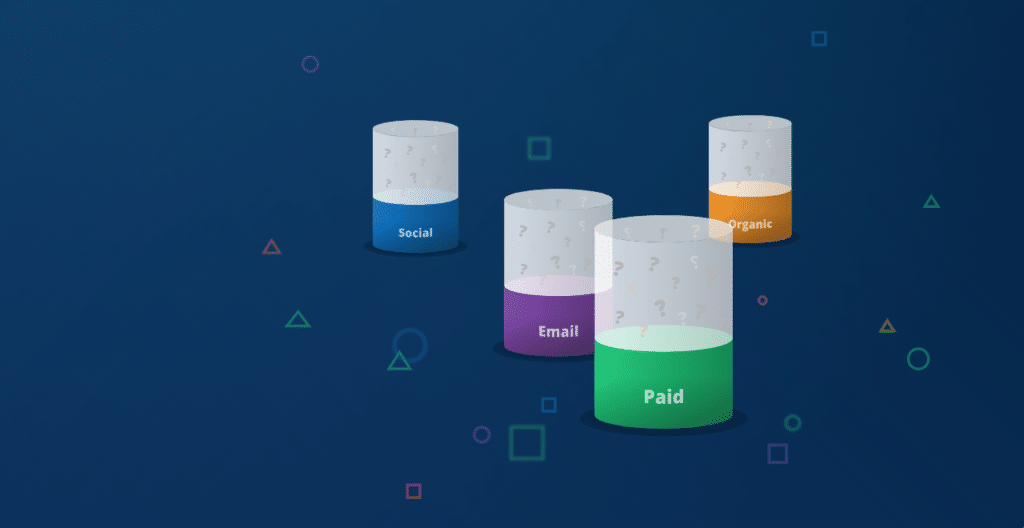The State of Facebook Mobile App Install Ads in 2018
Last year, in a study of leading mobile user acquisition performance of marketing channels, we determined that Facebook and Instagram drive the highest click-through rates for mobile app install campaigns, more than double that of email marketing. Facebook’s ad campaigns are clearly a powerful tool for targeting and retargeting highly-converting users. They help countless brands drive cross-platform growth, in the form of conversions, activations, and mobile app installs.
Perhaps even more essential are the valuable data-driven insights that optimized Facebook App Installs can provide. Specifically, these valuable insights can prove pivotal in informing marketing priorities, marketing budget allocation, and areas of overall marketing channel and platform strength.
Facebook App Install strategies that surprise and delight users aren’t grown overnight, however—they require a wide consideration of both industry trends and attribution best practices. Particularly in a world where U.S. consumers spend over 90 hours on smartphones each month, it’s important to consider innovative solutions to today’s most pressing mobile (not to mention cross-platform) attribution challenges.
Challenge 1: Exploring Beyond the Facebook App Install Event
Mobile marketing KPIs have grown increasingly sophisticated over time.
- Initially, impressions were the primary consideration of mobile advertisers. When paying for Facebook ads, it’s logical to wonder how many users are seeing them.
- Over time, the focus moved a bit further down the funnel to visits. It’s all well and good if your ad is being seen, but if it’s not resulting in clicks and web engagement, its effect is being substantially limited.
- The next logical step was for mobile advertisers to concentrate on retention and resulting conversions. If you can’t tell whether users are sticking around on your website and converting after clicking on your Facebook ads, how are you supposed to prove their ROI?
App install ads allow you to focus on these additional considerations: installs, and then retention and conversion. App installs are useless if the user opens the app once and never comes back, so one of the primary challenges when running app install ads is ensuring that you are paying for high-quality users—no mobile marketer should aim to acquire users just for the sake of acquiring them. The end goals should be engagement, signups, subscriptions, purchases, or whichever end-of-funnel goals will lead to your mobile app’s success.
Measuring—and subsequently optimizing for—user retention and conversion enables marketers to increase user quality while decreasing CPA. Your ability to successfully measure user behavior beyond app installs depends on whether your attribution provider is able to connect sessions across platforms.
Historically, attribution providers have relied on device basic probabilistic modeling, a method which generates a snapshot of a web user (consisting of a device’s IP address and user agent), and a second snapshot when this user opens the app. Unfortunately, basic probabilistic modeling decreases in accuracy over long click-to-install times, and risks misattributing installs for users who switch IPs or users with similar characteristics (for example, multiple members of the same household).
Nevertheless, there’s one thing upon which all mobile growth experts can agree—the evolution of desired mobile marketing KPIs has necessitated continual technological innovation. Failing to leverage industry-leading analytical tools to measure down-funnel conversions is no longer an option.
Challenge 2: Recognizing That an Attribution Provider Isn’t Optional
In a world where many publishers, ad networks, and mature platforms like Google and Facebook have brought multiple ad industry functions in-house, answering even basic questions about how high-quality users first entered your marketing funnel can be difficult.
For one thing, number counting can present a challenge, even if everyone in the ads industry is playing nicely. If you run ads on more than one ad network, there’s a chance that users may see ads served in multiple places. Only an attribution provider acting as a neutral third party can pull data from multiple ad networks and decide which ad led to any given install.
This is not to say, however, that all attribution providers are created equal, nor is it to say that all attribution providers have evolved equally. To the contrary, most attribution products currently on the market have their roots in web-only or app-only attribution, states of the industry locked in the past. User journeys that routinely cross web and app platforms and channels require more than the patches and tweaks legacy attribution providers are able to provide.
Unlike cookie-based attribution, Branch’s attribution engine avoids the two main pitfalls of attribution: over-attribution and under-attribution. You can click here to learn how Branch’s attribution engine helped Nextdoor achieve 25% fewer erroneous attributions when compared with its original legacy attribution strategy.
Challenge 3: Acknowledging the Attribution Elephant in the Room
The reality is that most marketers today are looking at analytics in product-specific siloes. Email marketers look at one set of dashboards, content marketers look at another set of dashboards, paid acquisition managers look at still another set of dashboards, and so on.
But what if a user clicks an ad for a mobile app, but decides not to download the app until three weeks later, when she receives an email about an app-only promotion, downloads the app, redeems the offer, and makes a purchase? Without Branch’s attribution, here’s what each person in this example will see:
- The mobile app marketer will see an install attributed to a click on an ad 3 weeks ago.
- The email marketer will see an open and a click through. This individual may also possibly see an install and a purchase—but in many cases will not, as most email marketers are not measuring email performance in-app.
Either way, no one is looking at the full picture, and recognizing that mobile app ads don’t drive app installs independently from other efforts. In this case, both the ad and the email led to the install and subsequent purchase. In fact, in a last-touch (rather than first-touch) user acquisition model, the email is what finally drove the user into the app and through to the conversion.
In 2018, there is no excuse cross-platform and cross-channel ads attribution. Branch provides solutions that span channels and treat users as people — rather than as disconnected user signals like email addresses and IDFAs.
Measuring Facebook App Install Ads Across Web and App Platforms
Branch allows you to measure and attribute impressions, clicks, installs, app opens, and down-funnel marketing events. Facebook supports a standard list of app events that are given first-class treatment within their analytics ecosystem. If you want to optimize Facebook ads for down-funnel events like purchases, you should implement their standard events using the Facebook SDK. Alternatively, if you have implemented Branch’s event logging code (v2/event), you can flip a switch and have these events forwarded to Facebook. This also allows Branch to provide you with features beyond what are available on the Facebook Dashboard.
At the very least, you should be evaluating Facebook ad performance across campaigns, ad sets, ads, creatives, secondary publishers (Facebook, Instagram, Messenger, or External Audience Network), platforms (iOS vs. Android, web vs. app, desktop vs. mobile), and view-through vs. click-through. Beyond the aggregated statistics provided on the Facebook Dashboard, Branch provides device-level data for export if you have signed Facebook’s standard agreement around data use. Branch also provides view-through attribution for installs, although Facebook has not opened this up to other events beyond install.
Moving one step further, it’s essential that mobile brands leverage an attribution provider who can recognize users across both web and app platforms. attribution provides you with a link graph for each of your actual human customers, available to reference across every channel and platform for accurate measurement and personalized user experiences.
Suffice it to say: Facebook advertisers should measure down-funnel events with Facebook and use a Facebook-sanctioned Mobile Measurement Partner like Branch to access analytics beyond what’s available on Facebook dashboards.
Exploring Facebook App Install Performance Across Channels
Marketers can no longer view app install (and engagement) ads as isolated user acquisition strategies, since app install ads affect the performance of other paid and organic marketing channels. Thankfully, Branch’s attribution engine enables marketers and mobile product managers to not only integrate all organic and paid user acquisition channels into one dashboard, but also de-duplicate user acquisition data from the channels and platforms that comprise your marketing strategy.
As mentioned, Branch’s attribution engine allows you to analyze impressions, clicks, installs, and opens, as well as down-funnel events like registrations, sign-ups, and conversions. Advanced filtering and grouping capabilities enable you to hone in on your most effective efforts and allocate your resources accordingly. With advanced API integrations, you can also query real-time analytics data and integrate it into your own BI solutions.
Thinking Beyond App Install Ad Attribution — Truly Maximizing Facebook App Install Ad Performance
As integral as attribution is to cross-platform growth, it’s also important to remember that attribution is only a piece of the puzzle. To achieve truly sustainable cross-channel and cross-platform growth, marketers must consider ways of limiting high-friction events at every stage of the funnel.
One tried-and-true step that many leading cross-platform brands have taken is introducing deep linking into cross-platform advertising strategies. Perhaps deep linking’s greatest strength is that it can apply to brands in every vertical, at every stage of growth, and across any and all marketing channels—including, of course, ads. Specifically, deep links enable mobile brands to ease the transition from ad to app by routing users directly to specific in-app content.
With more channels and platforms than ever before, and with more optimization tools and resources at your disposal, many mobile marketing professionals think the worlds of user acquisition and attribution have never been more complicated. Clearly, however, it doesn’t have to be that way. Click here to get started streamlining your cross-channel, cross-platform acquisition and attribution processes today.

























